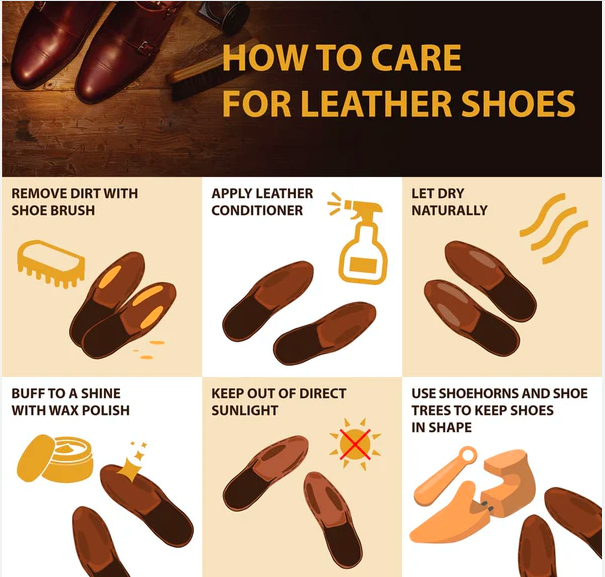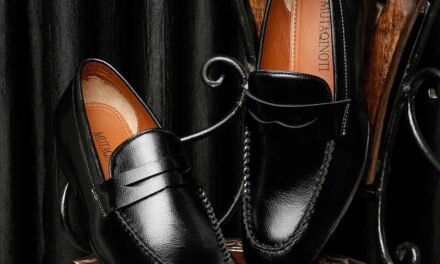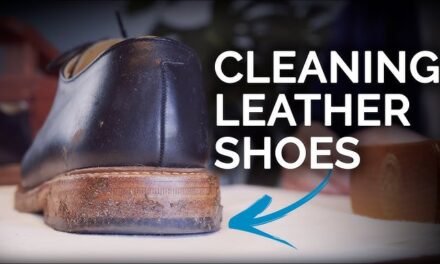Proper storage of leather footwear is essential to maintain its quality, shape, and longevity. Here’s the best way to store leather footwear to prevent damage:
1. Clean the Shoes Before Storage
- Remove Dirt and Dust: Use a soft brush or cloth to remove any dirt or debris.
- Condition the Leather: Apply a leather conditioner to prevent drying or cracking during storage.
- Dry Thoroughly: Ensure the shoes are completely dry before storing to avoid mold or mildew.
2. Use Shoe Trees
- Material: Use shoe trees made of cedarwood, as they absorb moisture, neutralize odors, and help maintain the shoe’s shape.
- Plastic Alternatives: If cedarwood shoe trees are unavailable, use plastic ones, but pair them with silica gel packets to manage moisture.
- Stuffing Option: For a budget-friendly option, stuff the shoes with acid-free tissue paper or soft cloth to retain shape.
3. Avoid Direct Sunlight and Heat
- Prevent Fading and Cracking: Store leather shoes away from direct sunlight, heaters, or radiators, as excessive heat can dry out and damage leather.
- Ideal Environment: Keep the storage area cool, dry, and well-ventilated.
4. Use Dust Bags or Shoe Covers
- Protection from Dust: Store shoes in breathable fabric dust bags to keep them clean while allowing airflow.
- Avoid Plastic Bags: Never use plastic bags, as they trap moisture and can lead to mold or mildew.
- Individual Wrapping: Wrap each shoe separately if storing in a shared space to prevent scratches.
5. Store in a Shoe Rack or Box
- Shoe Rack: Use a shoe rack to keep shoes off the floor and maintain organization.
- Shoe Boxes:
- Store shoes in their original boxes for protection.
- Use clear shoe storage boxes with ventilation holes for better visibility and airflow.
- Stacking Precautions: If stacking boxes, ensure they are sturdy to avoid crushing shoes at the bottom.
6. Avoid Overcrowding
- Sufficient Space: Give each pair enough space to avoid squishing or misshaping them.
- Organized Storage: Proper organization prevents scuffing and makes it easier to access specific pairs.
7. Control Humidity
- Ideal Humidity Levels: Maintain relative humidity around 40–60%.
- Use Dehumidifiers or Silica Gel: In humid climates, place silica gel packets or a dehumidifier in the storage area to absorb excess moisture.
- Avoid Damp Areas: Never store leather shoes in basements or attics prone to moisture.
8. Rotate Shoe Usage
- Prevent Long-Term Stress: Avoid wearing the same pair every day. Rotate usage to let leather shoes rest and dry out.
- Seasonal Storage: For out-of-season shoes, clean and condition them before storing.
9. Protect Against Pests
- Cedarwood Benefits: Cedar shoe trees or blocks naturally repel moths and insects.
- Mothballs or Sachets: Use pest-repellent sachets (e.g., lavender, cedar, or mint) for added protection, but avoid direct contact with shoes.
10. Periodically Inspect Stored Shoes
- Check for Damage: Regularly inspect shoes for signs of mold, cracks, or deformities.
- Recondition Leather: Apply leather conditioner every few months to keep stored shoes soft and supple.
11. Travel Storage
- Travel Shoe Bags: Use padded travel shoe bags or compartments to protect leather footwear during trips.
- Avoid Tight Packing: Prevent squeezing shoes in tightly packed luggage to avoid deforming them.
12. Specialized Tips for Different Types of Leather
- Patent Leather: Wrap in soft cloths or bags to prevent scratches and scuffs.
- Suede or Nubuck:
- Use a protective spray before storage.
- Store with shoe brushes to remove dust during periodic checks.
13. Long-Term Storage
- Dedicated Shoe Storage Units: Invest in storage units designed specifically for shoes, with proper ventilation and separation.
- Seasonal Rotation: Periodically air out shoes in long-term storage to prevent odors and maintain leather health.
Hashtags
#StoreLeatherShoes #ProtectLeatherFootwear #LeatherShoeCare #ShoeStorageTips #PreventShoeDamage #LeatherFootwearMaintenance #ShoeCareGuide #PreserveYourLeather #LuxuryShoeStorage #FootwearProtectionTips







